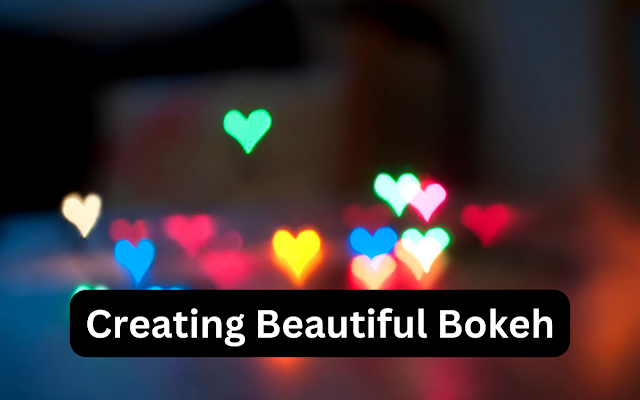Creating Beautiful Bokeh: Tips for Background Blur in Photos
Bokeh, the aesthetically pleasing out-of-focus background in a photograph, adds a touch of magic and artistic flair to your images. Mastering the art of creating beautiful bokeh allows you to emphasize your subject, eliminate distractions, and produce visually striking photos. Whether you're capturing portraits, macro shots, or scenic landscapes, here are essential tips to help you achieve stunning background blur and enhance the bokeh in your photographs.
1. Use a Wide Aperture:
Bokeh is most pronounced when using a wide aperture (small f-number). Set your camera to aperture priority mode (typically denoted as "A" or "Av") and choose the lowest f-number your lens allows (e.g., f/1.8, f/2.8). This results in a shallower depth of field and more pronounced bokeh.
2. Select the Right Lens:
Prime lenses with wide apertures, such as 50mm f/1.8 or 85mm f/1.4 lenses, are ideal for achieving beautiful bokeh. These lenses allow more light to enter, creating a pleasing background blur.
3. Get Closer to Your Subject:
To enhance the background blur, position yourself closer to your subject. This not only strengthens the bokeh effect but also emphasizes the main focal point in your composition.
4. Increase the Distance:
Increase the distance between your subject and the background to maximize the bokeh. The farther the background elements are from your subject, the more they will be rendered as smooth, blurred shapes.
5. Mind the Lens Focal Length:
Longer focal lengths, such as 85mm or 135mm, can produce more pronounced bokeh. Consider using telephoto lenses for portrait photography to achieve a pleasing background blur.
6. Shoot in Low Light:
Shooting in low-light conditions or during the golden hour provides natural opportunities for creating beautiful bokeh. Lower light levels often require wider apertures, contributing to the desired background blur.
7. Use a Fast Shutter Speed:
To prevent motion blur, especially when shooting handheld, use a fast shutter speed. This ensures sharp focus on your subject while maintaining the dreamy bokeh in the background.
8. Employ Backlighting:
Backlit scenes enhance the bokeh effect by creating a contrast between the subject and the background. Position your subject in front of a light source, such as the sun, to achieve a pleasing backlight and beautiful bokeh.
9. Experiment with Lens Filters:
Consider using creative lens filters, such as a soft focus or diffusion filter, to enhance the overall softness and dreamy quality of your images. Experiment with different filters to achieve unique bokeh effects.
10. Adjust Your Shooting Angle:
Vary your shooting angle to experiment with different perspectives. Shooting at a slight angle or from below can create a more pronounced bokeh, especially when photographing subjects against a distant background.
11. Focus on Isolation:
Use selective focus to isolate your subject from the background. Set your autofocus point on the main subject, allowing the background to naturally blur and draw attention to the focal point.
12. Consider Bokeh Shapes:
Some lenses allow you to change the shape of the bokeh highlights by using aperture diaphragms with unique shapes (e.g., circular, hexagonal). Experiment with this feature to add a creative touch to your bokeh.
13. Post-Processing Enhancement:
Enhance bokeh during post-processing by applying gentle vignettes or selectively adjusting the contrast and sharpness of the background. Use editing software to fine-tune the overall bokeh appearance.
14. Capture Bokeh in Diverse Settings:
Bokeh is not limited to portraits; experiment with creating beautiful bokeh in various settings, including macro photography, nature scenes, and urban environments.
15. Practice and Experiment:
Mastering bokeh is an art that comes with practice and experimentation. Take the time to explore different techniques, settings, and scenarios to discover the unique ways you can incorporate beautiful bokeh into your photography.
Conclusion: Elevating Your Photography
Creating beautiful bokeh adds a touch of sophistication and artistry to your photographs. By understanding the factors that contribute to stunning background blur, selecting the right equipment, and experimenting with various techniques, you can elevate the overall impact of your images. Whether you're a portrait enthusiast, a macro photographer, or an avid nature shooter, incorporating these bokeh tips will enhance the visual allure of your photos. Happy shooting!





